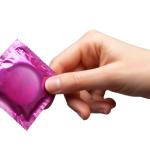In the year of using condoms not how they were intended, the Centers for Disease Control and Prevention (CDC) felt compelled to raise public awareness about why they exist in the first place and remind people how they should actually be used.
condoms
Bespoke condoms hit the market. With all that can be custom-made these days, why not them? Hoping to tackle the rampant fit and feel complaints of many men, Global Protection Corp.
In October, I wrote about the release of the Centers for Disease Control and Prevention’s (CDC) annual
The Centers for Disease Control and Prevention (CDC) released their annual Sexually Transmitted Disease Surveillance Report which reflects record highs in the three most commonly reported conditions in the United States in 2015 (in the fo
Humans have used some form of condom as a prevention against p
Truvada, a prescription drug used to prevent HIV infection, was recom






